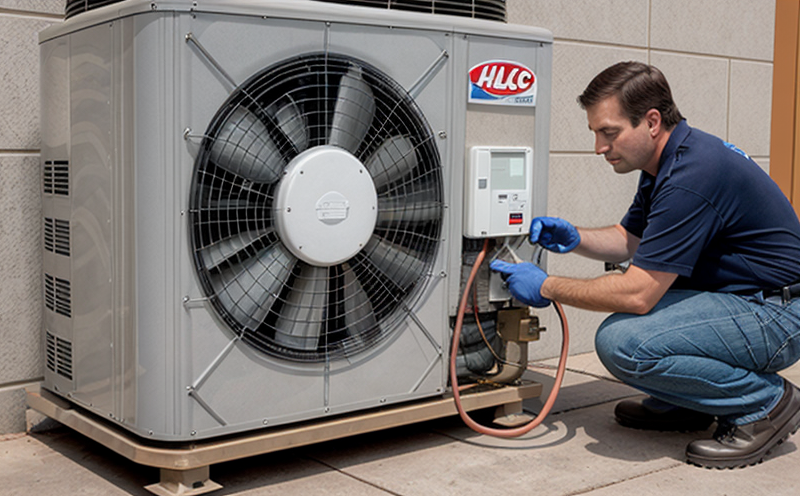Measuring Peak Energy Demands in HVAC Systems
Unlocking Energy Efficiency Measuring Peak Energy Demands in HVAC Systems
As businesses strive to reduce their environmental footprint and lower operational costs, optimizing heating, ventilation, and air conditioning (HVAC) systems has become a top priority. One crucial step in achieving this goal is measuring peak energy demands in HVAC systems. This laboratory service, offered by Eurolab, provides building owners and facility managers with the essential data needed to fine-tune their systems, reduce energy consumption, and mitigate potential equipment failures.
In this article, we will delve into the world of Measuring Peak Energy Demands in HVAC Systems, exploring its significance, benefits, and applications. Whether youre a seasoned facilities professional or a newcomer to the field, youll discover why this laboratory service is an invaluable tool for any organization seeking to optimize energy efficiency.
What is Measuring Peak Energy Demands in HVAC Systems?
Measuring peak energy demands in HVAC systems involves analyzing the maximum power consumption of building equipment during periods of high demand. This data is typically collected over a specific period, usually several weeks or months, using specialized laboratory equipment and software. The resulting measurements provide a detailed understanding of how your HVAC system operates under various conditions, including temperature fluctuations, occupancy levels, and equipment usage.
Why Measuring Peak Energy Demands in HVAC Systems Matters
The importance of Measuring Peak Energy Demands in HVAC Systems cannot be overstated. Here are just a few compelling reasons why this laboratory service is a must-have for any organization
Benefits of Measuring Peak Energy Demands in HVAC Systems
Optimize Energy Consumption By identifying peak energy usage patterns, you can implement targeted strategies to reduce consumption during these periods, resulting in significant cost savings and environmental benefits.
Extend Equipment Lifespan Properly calibrated and maintained equipment is less likely to fail prematurely, reducing downtime, repair costs, and potential safety hazards.
Improve Indoor Air Quality By understanding the relationships between occupancy levels, air filtration, and ventilation rates, you can optimize indoor air quality, enhancing occupant comfort and well-being.
Enhance System Reliability Peak energy demand measurements help identify equipment overload conditions, allowing for proactive maintenance, replacement, or upgrade of critical components.
Support Energy-Efficient Retrofits Armed with accurate data on peak energy usage patterns, you can make informed decisions about equipment upgrades, system modifications, and energy-efficient retrofits that minimize waste and maximize ROI.
Key Applications
Commercial Buildings Office complexes, shopping centers, hotels, hospitals, schools, and other commercial properties can benefit from Measuring Peak Energy Demands in HVAC Systems.
Industrial Facilities Manufacturing plants, warehouses, data centers, and research facilities can optimize energy consumption and equipment performance with this laboratory service.
Government Institutions Schools, universities, government offices, and public buildings can leverage this technology to enhance energy efficiency and resource allocation.
Real-World Examples
Many organizations have successfully implemented Measuring Peak Energy Demands in HVAC Systems to achieve significant results
A large office complex reduced peak energy consumption by 30 through targeted upgrades and operational adjustments.
A hospital improved indoor air quality by 25 after implementing optimized ventilation rates based on occupancy levels and equipment usage patterns.
QA Understanding Measuring Peak Energy Demands in HVAC Systems
Q What types of equipment can be measured using this laboratory service?
A Eurolabs Measuring Peak Energy Demands in HVAC Systems involves analyzing various components, including air handlers, chillers, boilers, cooling towers, and rooftop units.
Q How long does the measurement process take?
A The duration of the measurement process typically ranges from several weeks to a few months, depending on factors such as equipment type, operating schedule, and data collection requirements.
Q Can I measure peak energy demands in my building without using laboratory services?
A While DIY methods can provide some insight, they often lack the accuracy and comprehensive analysis provided by specialized laboratory equipment and expertise offered by Eurolab.
Conclusion
Measuring Peak Energy Demands in HVAC Systems is a critical step towards unlocking energy efficiency and reducing operational costs. By leveraging the expertise and cutting-edge technology of Eurolabs laboratory services, organizations can gain valuable insights into their HVAC system performance, optimize energy consumption, and make informed decisions about equipment upgrades and retrofits.
Dont miss this opportunity to transform your buildings energy profile and create a more sustainable future for generations to come. Contact Eurolab today to learn more about Measuring Peak Energy Demands in HVAC Systems and schedule your laboratory service.




